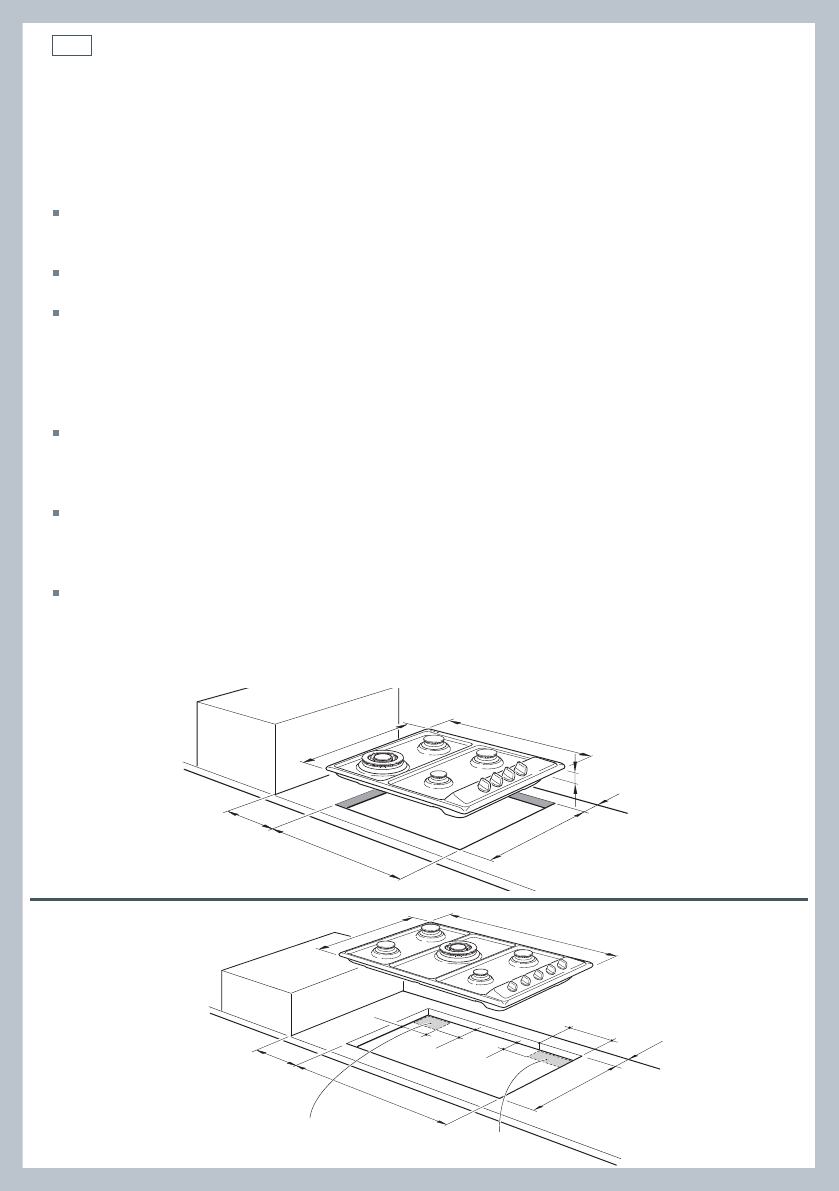
6
580
480
500
60
34
0
–2
560
200
0
–2
480
70
60
60 min
0
– 2
840
200 min
0
– 2
860
100
200
500
Area for
electrical connection
Area for
gas connection
Fig. 1b CG905 models - Product
and cutout dimensions
Fig. 1a CG604 models - Product
and cutout dimensions
Installation instructions
Dimensions and clearances
The installation shall comply with the dimensions in Figs. 1a, 1b, 2a and 2b, bearing in mind
the following requirements:
A minimum clearance of 20 mm has to be kept between the base of the cooktop and the top
of an underbench appliance or a shelf. To ensure this clearance, mount the spacers supplied
with the appliance, as shown in Fig. Figs. 3a and 3b.
CG905 models only: A partition between the base of the hob and the cupboard below should
be fitted 100 mm below the workbench surface if the cupboard is to be used for storage.
Overhead clearances - In no case shall the clearance between the highest part of the cooktop
and a range hood be less than 600 mm, or for an overhead exhaust fan, 750 mm. Any other
downward-facing combustible surface less than 600 mm above the highest part of the
cooktop shall be protected for the full width and depth of the cooking surface area in
accordance with local regulations in force. However, in no case shall this clearance to any
surface be less than 450 mm.
Side clearances - Where the distance from the periphery of the nearest burner to any vertical
combustible surface is less than 200 mm, the surface shall be protected in accordance with
local regulations in force to a height of not less than 150 mm above the cooktop for the full
dimension (width or depth) of the cooking surface area.
Where the distance from the periphery of the nearest burner to any horizontal combustible
surface is less than 200 mm, the horizontal surface shall be more than 10 mm below the
surface of the cooktop, or the horizontal surface shall be above the trivets (see requirement for
vertical combustible surfaces above).
Protection of combustible surfaces - Local regulations in force specify that, where required,
protection shall ensure that the surface temperature of the combustible surfaces does not
exceed 65 °C above ambient. To comply with this requirement satisfactorily, fix 5 mm-thick
ceramic tiles to the surface or attach fire-resistant material to the surface and cover with sheet
metal (minimum thickness 0.4 mm).
